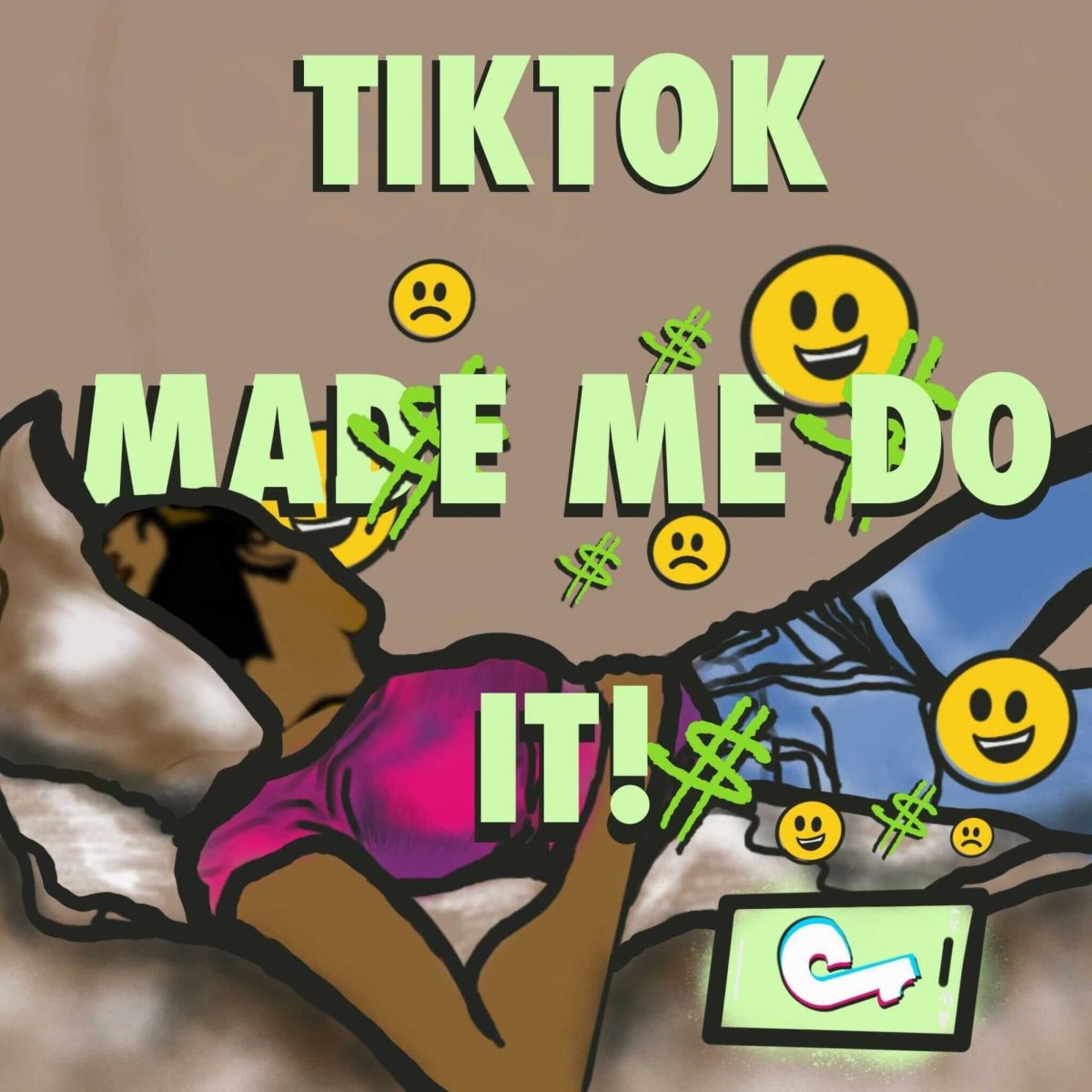Scrolling through your TikTok “For You” page (FYP), you have likely come across a haul, get ready with me or restock video. Content like this is often intended to lead viewers to purchase a product featured in the video. While the purchase may feel gratifying in the moment, falling victim to content like this is promoting overconsumption.
Taking the world by storm, TikTok quickly became one of the fastest-growing social media platforms, hitting one billion active monthly users in 2021. The most significant proportion of TikTok users are 10-19-year-olds and, at this age, are still incredibly impressionable and easily influenced.
Alix Earle, who has 5.9 million TikTok followers, gained her popularity because of her “iconic [get ready with me] videos,” and has become one of the most trusted influencers when it comes to beauty products, according to E! News.
In August, Earle partnered with Benefit Cosmetics to create her own makeup bag that customers would receive if they spent $60 on Benefit products at Ulta. The words “Alix made me buy it” plastered on the side of the fluffy pink bag only reinforce the idea of overconsumption, all while marketing it as harmless fun.
Though Earle is only trying to make smart business moves, she is influencing millions of people to purchase excessive amounts of makeup products that they most likely don’t need, simply because she said they’re the best.
When TikTok first began gaining popularity, product content may not have seemed like an issue. Creators were simply trying to make money and stay afloat in any way they could, just like the rest of us. However, TikTok has now caught onto the idea and is prompting users to buy even more with TikTok Shop.
While online shopping is already reasonably straightforward, Glamour described TikTok Shop as so easy to use “it’s almost creepy.” The seamless experience of being able to shop directly on TikTok can be harmful to users as it prompts them to spend excessive amounts of money with one simple click of a button.
One of the biggest trends on TikTok recently is videos that show content creators restocking products around their homes. This can include restocking food items in the kitchen, skincare products or items in one’s laundry room. Creators of these videos almost always have “aesthetic” or “minimalistic” containers that each product goes in, and most of the time, there are far too many unnecessary items.
Videos like this can create harmful standards for people who watch them. Viewers might believe they need the same containers or products shown in each video when, in reality, this isn’t true. It is unrealistic and unattainable for everyone’s life to match a particular aesthetic, especially in a college setting.
The trend of buying Stanley Cups and making videos on “WaterTok” has shown the extent to which overconsumption has taken over. Reusable water bottles are an excellent investment as they prevent plastic from polluting oceans and help you save money over time; however, buying 10 Stanley Cups to have a variety of colors is excessive.
The TikTok algorithm plays a significant role in consumerism on the app. Each person’s FYP is specifically curated toward their tastes. Likes, comments, shares and even how much time spent watching each video is tracked.
As you begin to see the same type of content and the same creators as you scroll , a sense of trust is built, which can lead you to feel compelled to purchase the products they show.
Though it is probably impossible to stop TikTok from influencing one’s purchases, it is crucial to think before spending money on something you may not need. Watching influencers live lavish lives is fun, but you do not need to match them constantly, so put your credit card away.
– Rhian Davis is a journalism sophomore
The University Star welcomes Letters to the Editor from its readers. All submissions are reviewed and considered by the Editor-in-Chief and Opinions Editor for publication. Not all letters are guaranteed for publication.




















